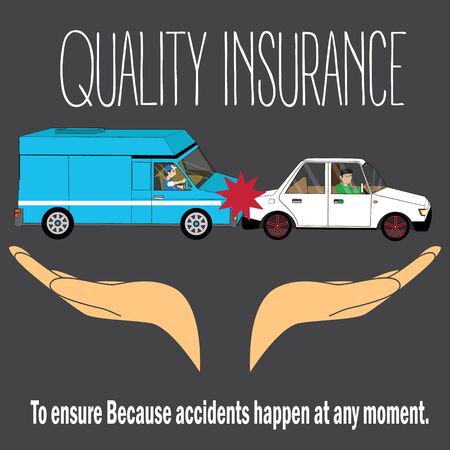1. Understanding the Basics of Life Insurance Types
When you’re looking for a life insurance policy in the U.S., it’s important to know your options. The three main types of permanent life insurance are variable life, whole life, and universal life. Each offers different ways to protect your loved ones and build financial security. Let’s break down what makes each type unique.
Variable Life Insurance
Variable life insurance gives you lifelong coverage, just like other permanent policies, but with an investment twist. Part of your premium goes into a cash value account that can be invested in various options such as stocks and bonds. This means your cash value can grow—or shrink—based on market performance. You get flexibility, but also take on more risk.
Whole Life Insurance
Whole life insurance is known for its simplicity and guarantees. It provides coverage for your entire life with fixed premiums, guaranteed death benefits, and a cash value component that grows at a steady, guaranteed rate set by the insurer. Whole life is often chosen by people who want predictable costs and steady growth without worrying about market ups and downs.
Universal Life Insurance
Universal life insurance offers more flexibility than whole life. You can adjust your premiums and death benefit (within certain limits). The cash value grows based on interest rates set by the insurer or linked to an index. Universal life lets you adapt your policy as your needs change over time, but the returns are usually less aggressive than variable life.
Main Features at a Glance
| Type | Premiums | Cash Value Growth | Investment Choices | Flexibility |
|---|---|---|---|---|
| Variable Life | Flexible/Level | Market-driven (can rise or fall) | Yes (stocks, bonds, funds) | High (adjustable premiums & investments) |
| Whole Life | Level | Guaranteed fixed rate | No (set by insurer) | Low (fixed structure) |
| Universal Life | Flexible | Interest-based (variable rates) | No (insurer manages growth) | Moderate (adjust premiums & death benefit) |
The Bottom Line on Basics
If you want stable coverage with steady growth, whole life might fit. If you prefer flexibility and some control over investments, variable or universal could work better. Understanding these basics helps you compare your options as you decide which type of policy meets your needs.
2. Cost and Premium Flexibility
Understanding Premium Structures
When choosing a life insurance policy, how you pay your premiums—and how much they cost over time—can make a big difference in your financial planning. Let’s break down the premium structures for Variable Life, Whole Life, and Universal Life Insurance.
| Policy Type | Premium Structure | Payment Flexibility | Cost Over Time |
|---|---|---|---|
| Whole Life | Fixed premiums (same amount every payment) | Low flexibility; must pay on schedule | Tends to be higher at first, but remains steady throughout the life of the policy |
| Universal Life | Flexible premiums (can adjust payment amounts) | High flexibility; can skip or change payments within limits if there’s enough cash value | Can start lower than whole life, but may increase if policy performance doesn’t meet expectations |
| Variable Life | Usually flexible premiums (may vary based on investments) | Moderate flexibility; payments can be adjusted, but investment performance impacts required minimums | Potentially lower at first, but can rise if investments underperform; fees may also be higher due to investment options |
Payment Flexibility: What Does It Mean for You?
If you want the predictability of paying the same amount every month or year, Whole Life Insurance is likely to suit you best. The premiums never change, making budgeting easier.
If your income varies or you want more control over when and how much you pay, Universal Life offers a lot of flexibility. As long as you have enough cash value in your policy, you can reduce, skip, or increase payments to match your situation.
Variable Life Insurance also allows some flexibility, but because your policy’s investments affect both the cash value and death benefit, there might be times when you need to pay more to keep your policy active if your investments don’t perform well.
A Quick Look at Costs Over Time
The overall cost of each policy type depends on several factors—your age, health, the size of the death benefit, and how well any investments perform (especially for Variable and Universal Life). Here’s a simple way to think about it:
- Whole Life: Higher starting cost, but predictable and stable.
- Universal Life: Can be cheaper early on, but costs could rise later depending on interest rates and fees.
- Variable Life: May start low if investments do well, but there’s more risk of rising costs if markets dip or fees stack up.
Your Bottom Line
If you’re looking for cost certainty and easy budgeting, Whole Life might be right for you. If flexibility matters more—or if you’re comfortable with some risk in exchange for potential savings—Universal or Variable Life could fit better. Understanding these differences will help you choose a policy that aligns with your financial goals and lifestyle.

3. Investment Options and Cash Value Growth
When it comes to choosing between variable life, whole life, and universal life insurance, understanding how each policy handles investments and builds cash value is key. Let’s break down the differences in simple terms so you can see which might fit your financial goals.
How Each Policy Grows Your Money
| Policy Type | Investment Options | Cash Value Growth | Risk Level | Guarantees? |
|---|---|---|---|---|
| Variable Life Insurance | You choose from a range of investment options (like mutual funds) | Depends on performance of chosen investments—can go up or down | Higher risk, higher reward potential | No guaranteed returns; cash value may fluctuate with markets |
| Whole Life Insurance | Insurance company manages investments for you | Grows at a fixed rate set by the insurer; steady growth over time | Low risk | Guaranteed cash value accumulation and death benefit |
| Universal Life Insurance | You may have some say in how funds are allocated (more flexible than whole, less than variable) | Growth depends on interest rates set by insurer (sometimes linked to index) | Moderate risk—more flexibility but not as risky as variable life | Some minimum guarantees, but not as strong as whole life |
The Details: Risks and Rewards Explained
Variable Life Insurance: Greater Control, More Risk
If you like the idea of managing your own investments and are comfortable with ups and downs in the market, variable life lets you take the wheel. You could see bigger gains—but there’s also a chance your cash value won’t grow much or could even decrease if your chosen funds don’t perform well.
Whole Life Insurance: Steady Growth, Less Worry
This option is great for those who want predictability. The insurer takes care of everything, and you’re guaranteed a certain amount of growth every year. It’s safer, but the trade-off is usually slower growth compared to riskier choices.
Universal Life Insurance: Flexibility in the Middle
If you want something more flexible than whole life but less hands-on than variable life, universal life gives you some control over how your money is invested. Your returns might be higher than whole life in good years, but they also depend on changing interest rates set by the insurer.
Quick Recap: What Matters Most?
- If you want control and are okay with risk: Variable life insurance may suit you.
- If you prefer guarantees and peace of mind: Whole life insurance offers steady growth.
- If you want flexibility without too much risk: Universal life insurance is a solid compromise.
4. Risks, Guarantees, and Policyholder Responsibilities
When choosing between Variable Life, Whole Life, and Universal Life insurance, it’s important to understand the risks you’re taking on, what guarantees each policy provides, and how involved you’ll need to be as a policyholder. Let’s break down these key factors to help you see which option may fit your comfort level and lifestyle.
Understanding the Risk Exposure
Variable Life Insurance: With this type of policy, your cash value is invested in various sub-accounts (similar to mutual funds). This means your cash value and even your death benefit can fluctuate based on market performance. There’s potential for greater growth—but also for loss if the investments don’t perform well.
Whole Life Insurance: This is the most stable option. The insurer bears the investment risk, so your cash value grows at a guaranteed rate. There’s little to no risk of losing value.
Universal Life Insurance: The risk here is moderate. Your interest rate can vary based on market conditions but usually has a minimum guarantee. Some policies offer indexed options tied to stock market performance, which introduces more variability but still less than variable life.
Guaranteed Benefits Comparison
| Policy Type | Guaranteed Death Benefit? | Guaranteed Cash Value? | Minimum Interest/Return? |
|---|---|---|---|
| Variable Life | Yes* | No | No |
| Whole Life | Yes | Yes | Yes |
| Universal Life | Yes* | No (Varies by policy) | Usually (with a floor) |
*Death benefit may vary with policy performance but often has a minimum guaranteed amount.
Policyholder Involvement Needed
Variable Life Insurance: These policies require active management. You’ll need to monitor your investment choices, review performance regularly, and possibly adjust allocations. If you prefer hands-on control or have investing experience, this could suit you.
Whole Life Insurance: Very little involvement is needed after purchase. Premiums are fixed, benefits are predictable, and the insurer manages everything.
Universal Life Insurance: Moderate involvement is required. You can adjust premiums and sometimes change death benefits or investment allocations (if indexed), but you don’t have to manage investments directly like with variable life.
A Quick Comparison Table
| Risk Level | Guarantees Provided | Your Involvement | |
|---|---|---|---|
| Variable Life | High – Tied to market performance | Mainly death benefit minimums; no cash value guarantees | High – Requires ongoing decisions about investments |
| Whole Life | Low – Insurer takes all the investment risk | Full guarantees on both death benefit and cash value growth | Low – Set it and forget it approach; minimal management needed |
| Universal Life | Medium – Varies by product features and market rates | Mainly death benefit; some have minimum interest credits for cash value | Medium – Flexible premiums/death benefits; occasional monitoring suggested |
The Bottom Line on Risks and Responsibilities
Your comfort with risk and how much time you want to spend managing your policy are big factors in choosing the right life insurance. Variable life offers potential growth but comes with more work and higher risk. Whole life offers peace of mind with strong guarantees and low maintenance. Universal life sits in the middle—more flexibility than whole life, but less risk than variable life. Consider what matters most to you as you compare these options.
5. Choosing the Right Policy for Your Needs
Key Factors to Consider
Selecting the best life insurance policy—whether it’s variable life, whole life, or universal life—depends on several personal factors. Each type of policy offers unique features that may align better with your individual circumstances and goals. Here are some of the most important aspects to think about:
Your Personal Financial Situation
If you have a steady income but limited savings, a policy with fixed premiums (like whole life) might make budgeting easier. If you’re comfortable managing investments and have extra funds to invest, variable life could be appealing. Universal life offers flexibility if your income varies year to year.
Long-Term Goals
Are you looking for guaranteed lifelong protection, building cash value for retirement, or leaving a legacy for your family? Whole life provides stability and guaranteed growth; variable life lets you potentially grow your cash value faster (but with more risk); universal life gives flexibility as your needs change over time.
Risk Tolerance
How do you feel about investment risk? If you prefer safety and predictability, whole life is probably best. If you’re open to market ups and downs for higher potential returns, variable life could work. Universal life sits in between, letting you adjust how much risk you want over time.
Family Needs
Consider your family’s current and future financial needs. If you have young children or dependents who will rely on your income for many years, permanent coverage like whole or universal life ensures they’re protected no matter what happens.
Quick Comparison Table
| Whole Life | Universal Life | Variable Life | |
|---|---|---|---|
| Premiums | Fixed | Flexible | Flexible (may increase) |
| Cash Value Growth | Guaranteed | Interest-based (varies) | Tied to investments (can fluctuate) |
| Investment Control | No (managed by insurer) | Some control over interest options | You choose investment options |
| Risk Level | Low | Medium | High (market risk) |
| Lifelong Coverage? | Yes, as long as premiums are paid | Yes, but depends on account value & premium payments | Yes, if investments perform well & premiums are maintained |
| Best For… | Savers seeking stability & guarantees | Those wanting flexibility as needs change | People comfortable with investment risks & seeking growth potential |
Your Next Steps: Matching Policy Type to Your Life Stage and Priorities
- If you’re just starting a family: Consider policies with guaranteed coverage and predictable costs—whole life or basic universal life can give peace of mind.
- If your income fluctuates: Universal life lets you adapt premium payments when things get tight or when you have extra cash.
- If you’re focused on building wealth: Variable life policies give more control over how your money is invested but remember the added risks.
- If stability matters most: Whole life keeps things simple with fixed payments and guaranteed cash value growth.
- If you want flexibility: Universal life allows you to adjust both death benefit amounts and premium payments as your situation evolves.
The right choice depends on balancing what matters most to you—security, flexibility, or growth—and how much risk youre willing to take along the way. Take time to review your budget, talk with your family about future needs, and consult a qualified insurance agent before making a decision.


